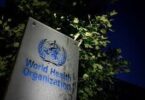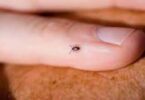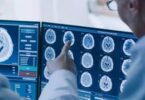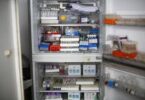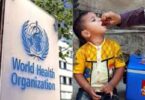Dr. Neelam Siddiqui
Breast cancer may be a devastating disease but it is potentially curable. Although in majority of cases with breast cancer, it is difficult to tell what exactly triggered the beginning of cancer, certain factors have been identified which can make a woman more prone to develop breast cancer than others.
The following factors may increase the risk of breast cancer:
Age: The older we grow the higher the chances of developing breast cancer.
Exposure to estrogen: Estrogen is a hormone which is normally produced in females and takes part in reproductive function. Women who are overexposed to estrogen due to early periods, late menopause or late childbirth, may be at a relatively increased risk of breast cancer. Post-menopausal women who take hormone replacement therapy have also been shown to have an increased chance of breast cancer. Once a woman stops taking hormone replacement therapy, her risk of developing breast cancer decreases.
Obesity: Women who gain weight especially with increased waist girth, around the age of menopause, have an increased chance of breast cancer and breast cancer related death. After menopause, when the ovaries stop producing estrogen, fat tissue makes this hormone, that is why obesity can increase breast cancer risk.
Inherited risk: Breast cancer may run in the family, which can be indicated by history of breast or ovarian cancer in close relatives. There are genes linked with an increased risk of breast cancer, such as BRCAs1 and BRAC 2 genes. Women who have changes in these genes are at a much higher risk of developing breast cancer, compared to an individual without these genes.
Physical activity: Lack of physical associated with an increased risk of developing breast cancer.
Radiotherapy to chest wall and alcohol are some other factors in the list.
How to prevent breast cancer?
Once we know how cancer starts, what makes it grow and spread, we may be able to prevent it. As is obvious from the above list, there are certain factors which we cannot change, e.g. age and family inheritance; however we should try to look for protective factors which could help decrease the risk of developing breast cancer.
Exercise: Most Pakistani women, especially those coming from the cities, have sedentary life styles. This is because of multiple cultural, social and economic factors. In order to try to improve our health, we need to understand that exercise at least half an hour to one hour every day would help prevent not only breast cancer but also many other diseases. I would urge all women to keep themselves active through out the day. Simple steps such as walking fast, climbing stairs rather than taking a lift, not sitting after meals can keep one healthy.
Diet: Taking a diet that is based on plants such as raw vegetables, fruits, nuts and grains can help prevent the risk of cancer. You should also avoid sugary drinks, processed and fried foods.
Surgery; Women whose genetic tests reveal BRCA mutation, may benefit from preventive breast and ovarian surgery.
Breast-feeding has been shown to be helpful in keeping the estrogen levels low.
Avoid taking over the counter hormone tablets. If you have to take these tablets, you must discuss with your doctor first.
How does breast cancer present? This is a question we hear frequently. The first symptom of breast cancer for many women is a lump in the breast. If you spot a lump, see your doctor straight away, You need to know that 9 out of 10 breast lumps (90%) are not cancer, so please do not be afraid to see the doctor, who can decide if any tests are required or not.
The following signs could be due to breast cancer:
A lump or thickening in an area of the breast
A change in the size or shape of breast
Dimpling of the skin or the skin over the breast becomes like orange peel
A change in the shape of nipple, particularly if it turns in, sinks into the breast or becomes irregular in shape
A blood-stained discharge from the nipple
An eczema like rash or ulcer over the breast
A swelling or lump in armpit
These signs don’t necessarily mean you have cancer but if you notice any such changes, you should get a checkup by your doctor.
Once you see the doctor, after examination your doctor may decide to do mammogram or ultrasound of the breast. If needed, further tests like a biopsy or needle test of the lump are arranged. In case a diagnosis of breast cancer is made, the patient is referred to a cancer specialist. Although breast cancer is much more common in females, it can sometime develop in men too. Therefore, all the signs mentioned above, apply to male breast cancer as well.
Treatment of breast cancer: Over the last few decades, we have come a long way in understanding the different aspects of breast cancer. This has been made possible due to research conducted on thousands of women suffering from breast cancer around the world. We now know that breast cancer is a disease which has different molecular types which have specific biology, behavior and response to therapy. It is this understanding that is helping us tailor treatment for each patient with breast cancer according to the subtype of disease that she has.
Depending on the stage at presentation, several treatment modalities are used for breast cancer patient. I will briefly explain the new trends in treatment of breast cancer:
- Surgery: Surgery plays an important role in therapy for patients presenting with localized disease. Traditionally, surgeons used to do mastectomy, which is a removal of the entire breast and chest wall tissue. However, these days if a woman is diagnosed with an early stage disease, it is very likely that she will not have mastectomy. Instead breast conservation is done in these cases, meaning that only a portion of the breast which has the tumor and little bit of normal tissue around is excised. This operation has very good cosmetic results and also does not compromise the survival. Likewise surgery of the axilla is also now much more conservative and most women undergo only sentinel lymph node biopsy where only 2-3 lymph nodes under the armpit are removed. This procedure helps reduce the risks of side effects especially arm lymphedema.
- Radiotherapy: Some patients require radiotherapy to the chest wall. It is usually given after a patient has had surgery and chemotherapy.
- Chemotherapy: We now know that breast cancer is a systemic disease. By the time a patient presents with a lump in the breast, the cancer cells are likely to have travelled to other parts of the body. While surgery and radiotherapy provide local control, chemotherapy takes care of tumor cells wherever they are in the body. Therefore, in most cases, either before or after surgery the patients are given chemotherapy. Chemotherapy is not an easy treatment and does have side effects but most of these effects are temporary and manageable with supportive remedies.
- Hormonal therapy: Patients who have hormone receptor positive tumor, are given hormone therapy for at least five years or more.
- Targeted therapy: In 25 to 30 per cent of breast cancer patients, the tumor is reported to be HER-2 positive. These patients benefit from targeted anti-HER-2 antibody.
- New therapies: Several trials are looking at improving outcome for patients with breast cancer. As the results of these trials are announced, we try to incorporate these results in our patient care.
Overall, the ten-year survival rate for all types of breast cancer has improved significantly by 25 to 30 per cent present over the last two decades. This improvement is because of better understanding of the disease, earlier disease detection and improvement in treatment of breast cancer.
Reducing risk, early detection and appropriate therapy can save almost 75-80 percent of women in the prime of their life from this deadly disease.

